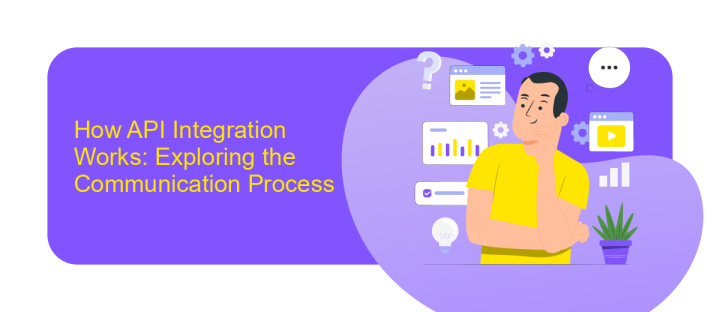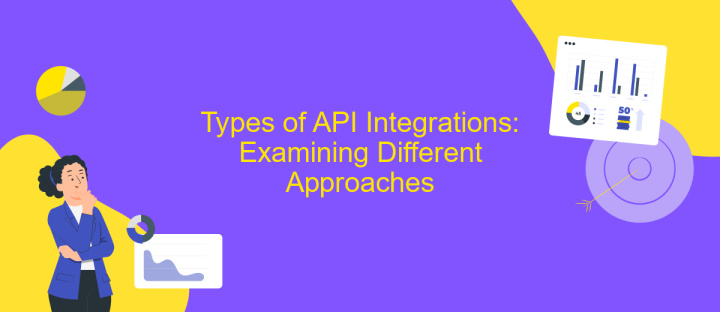What is API Integration Mean
API integration is a crucial component in today's digital landscape, enabling seamless communication between different software applications. By connecting various systems, APIs allow for the efficient exchange of data and functionality, enhancing user experiences and streamlining operations. This article explores the concept of API integration, its significance in modern technology, and how businesses leverage it to drive innovation and improve efficiency across platforms.
Understanding API Integration: A Definition and Overview
API integration refers to the process of connecting different software applications or systems through their Application Programming Interfaces (APIs). This allows for the seamless exchange of data and functionalities between disparate systems, enhancing their capabilities and user experience. By enabling communication between various platforms, API integration helps businesses streamline operations, improve efficiency, and foster innovation.
- Facilitates data sharing between systems
- Enhances functionality by combining different services
- Automates workflows and reduces manual effort
- Improves scalability and flexibility of applications
- Enables rapid development and deployment of solutions
Understanding API integration is crucial for businesses looking to leverage digital transformation. By connecting systems, companies can create a more cohesive technology stack that supports their goals. Whether it's integrating a customer relationship management (CRM) system with an email marketing tool or connecting e-commerce platforms with payment gateways, API integration is a powerful tool that drives growth and efficiency. As technology continues to evolve, the role of API integration in building interconnected digital ecosystems will only become more significant.
How API Integration Works: Exploring the Communication Process

API integration facilitates seamless communication between different software systems by allowing them to exchange data and perform actions without direct human intervention. At its core, API integration involves sending requests and receiving responses between applications through defined endpoints. These endpoints are specific paths that the API exposes, enabling applications to query data, update records, or initiate processes. The communication process typically involves RESTful APIs, which use standard HTTP methods such as GET, POST, PUT, and DELETE to perform operations. By adhering to these protocols, systems can interact consistently and reliably.
To streamline API integration, services like ApiX-Drive offer tools that simplify the setup process. ApiX-Drive allows users to connect various applications without needing extensive programming knowledge. By providing a user-friendly interface, it enables businesses to automate workflows and data transfers efficiently. This service handles the complexity of authentication, error handling, and data mapping, ensuring that integrations are robust and adaptable to changing business needs. As a result, organizations can focus on leveraging integrated capabilities to enhance productivity and drive innovation.
Types of API Integrations: Examining Different Approaches

API integration is crucial for seamless communication between different software systems, enhancing functionality and user experience. There are various approaches to API integration, each with unique benefits and use cases. Understanding these types helps in selecting the most suitable method for specific business needs.
- RESTful Integration: This is the most common approach, utilizing HTTP methods to enable communication between systems. It's known for its simplicity and scalability.
- SOAP Integration: This protocol uses XML for messaging and is ideal for applications requiring high security and transaction reliability.
- GraphQL Integration: A more flexible alternative to REST, GraphQL allows clients to request exactly the data they need, reducing over-fetching and under-fetching issues.
- Webhooks: These are automated messages sent from apps when something happens. They are a lightweight solution for real-time data updates.
- SDK Integration: Software Development Kits provide pre-built functions and libraries, simplifying the integration process for developers.
Choosing the right type of API integration depends on various factors including the specific requirements, existing infrastructure, and desired outcomes. By understanding the different approaches, businesses can make informed decisions that enhance their technological capabilities.
Benefits of API Integration: Enhancing Business Processes and Efficiency

API integration serves as a vital tool for modern businesses, streamlining operations and improving overall efficiency. By connecting various software systems, APIs enable seamless communication and data exchange, which reduces manual efforts and minimizes errors. This integration fosters a more cohesive digital ecosystem, allowing businesses to focus on strategic initiatives rather than operational hurdles.
Incorporating API integration into business processes offers numerous advantages. It not only enhances productivity but also provides the flexibility to adapt to changing market demands. Companies can quickly implement new features or services, ensuring they stay competitive in a fast-paced environment.
- Automated workflows that save time and reduce human error.
- Improved data accuracy through real-time information sharing.
- Enhanced customer experience with personalized and timely services.
- Scalability to support business growth and expansion.
Ultimately, API integration is a powerful enabler for businesses seeking to optimize their operations. By leveraging this technology, companies can unlock new opportunities for innovation, drive efficiency, and achieve greater agility in their processes. As a result, they are better positioned to meet the demands of an ever-evolving digital landscape.
- Automate the work of an online store or landing
- Empower through integration
- Don't spend money on programmers and integrators
- Save time by automating routine tasks
Real-World Examples and Use Cases of API Integration
API integration is prevalent in various real-world scenarios, enhancing functionality and efficiency across industries. For instance, e-commerce platforms often integrate with payment gateways like PayPal or Stripe through APIs. This integration facilitates secure and seamless transactions, allowing customers to make purchases with ease. Additionally, travel websites frequently use API integration to aggregate data from airlines, hotels, and car rental services, providing users with comprehensive travel options and real-time availability.
In the business world, tools like ApiX-Drive simplify API integration by offering a user-friendly interface that connects various applications without requiring extensive coding knowledge. This service is particularly beneficial for automating workflows between CRM systems, marketing platforms, and other business tools. By leveraging ApiX-Drive, companies can streamline operations, reduce manual data entry, and enhance productivity. Such integrations are not only cost-effective but also enable businesses to respond swiftly to market demands and improve customer satisfaction.
FAQ
What is API integration?
Why is API integration important?
What are the common challenges in API integration?
How can API integration benefit my business?
What tools can help with API integration?
Time is the most valuable resource for business today. Almost half of it is wasted on routine tasks. Your employees are constantly forced to perform monotonous tasks that are difficult to classify as important and specialized. You can leave everything as it is by hiring additional employees, or you can automate most of the business processes using the ApiX-Drive online connector to get rid of unnecessary time and money expenses once and for all. The choice is yours!


